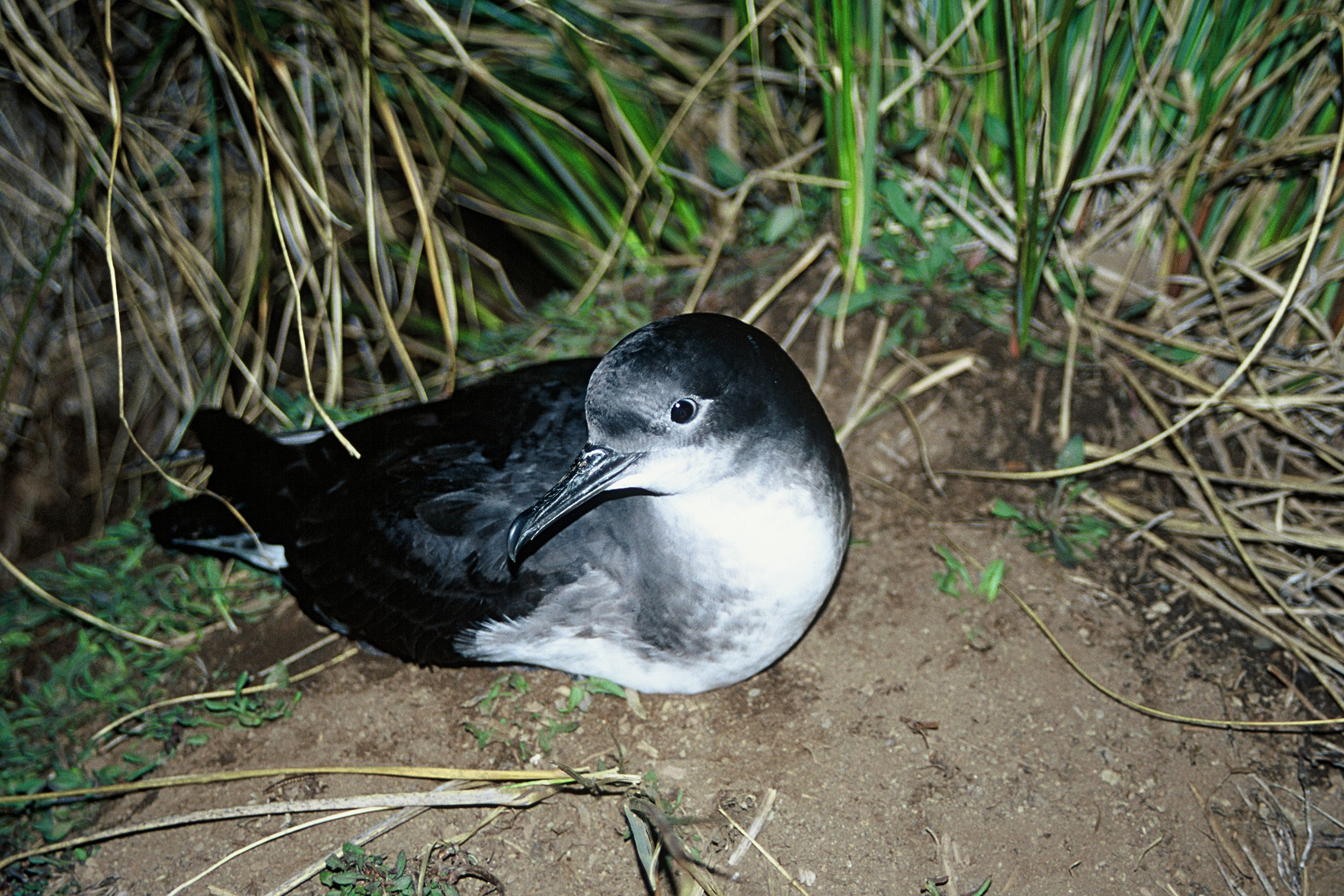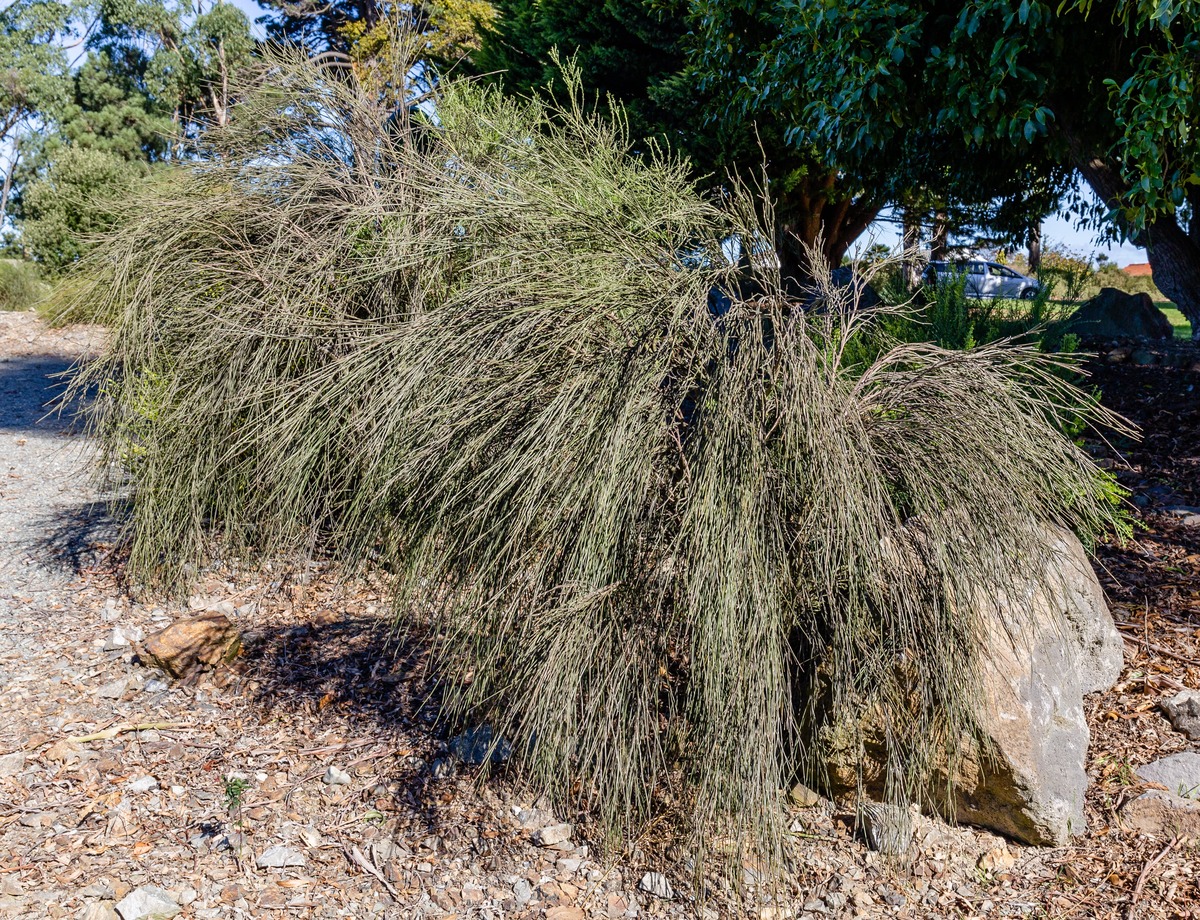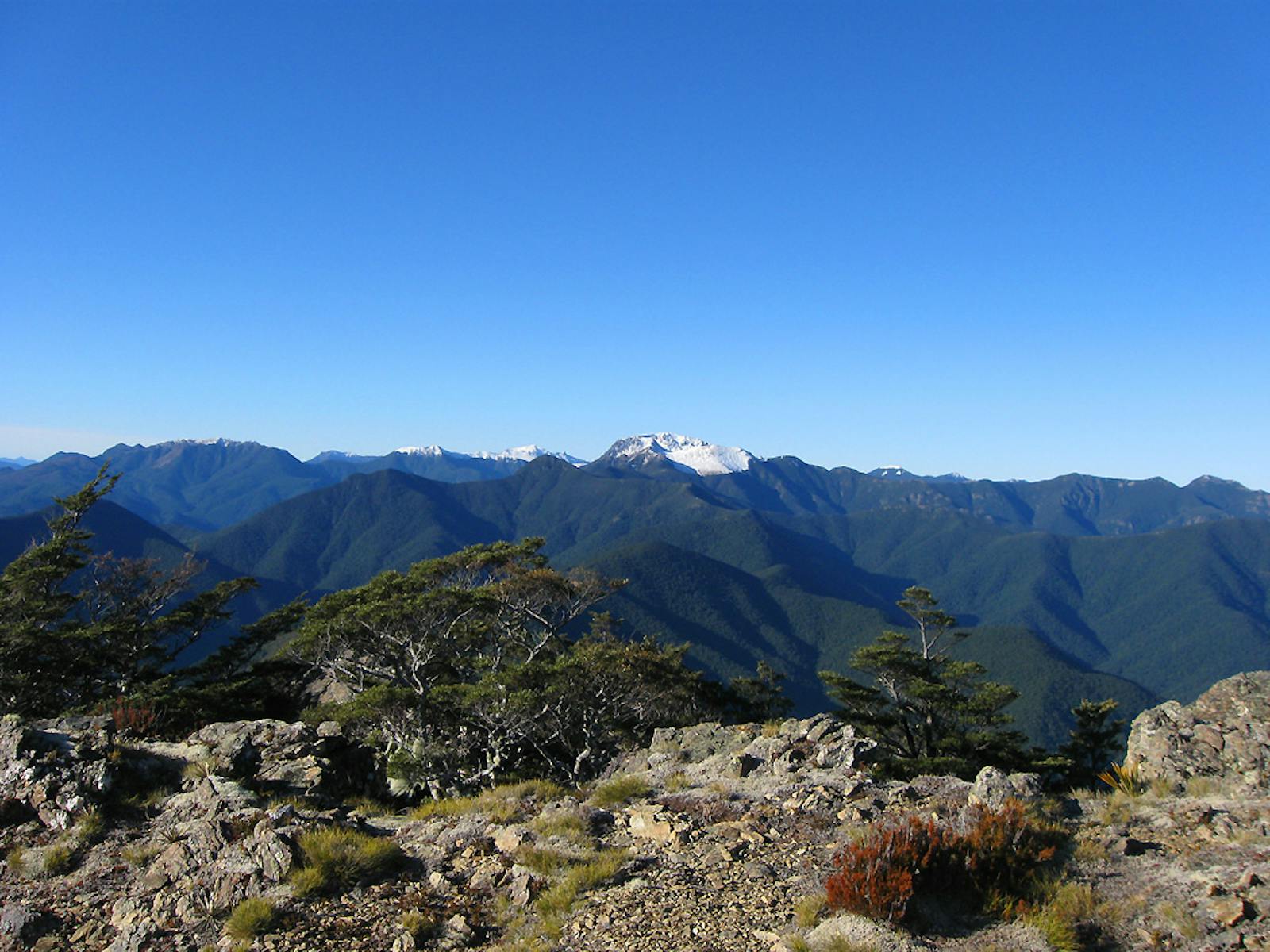Richmond Temperate Forests
The ecoregion’s land area is provided in units of 1,000 hectares. The conservation target is the Global Safety Net (GSN1) area for the given ecoregion. The protection level indicates the percentage of the GSN goal that is currently protected on a scale of 0-10. N/A means data is not available at this time.
Bioregion: New Zealand (AU1)
Realm: Australasia
Ecoregion Size (1000 ha):
1,323
Ecoregion ID:
175
Conservation Target:
51%
Protection Level:
7
States: New Zealand
The tuatara (Sphenodon punctatus) and Brother Islands tuatara (S. guntheri), the only extant species of the ancient reptilian order Sphenodontida (not lizards or dinosaurs), still survive on offshore islands of this ecoregion. The imposing, hand-sized Kaikoura giant weta (Deinacrida parva) connotes the great age and isolation of the plants and animals of New Zealand and the Richmond forests.
.jpg)
The flagship species of the Richmond Temperate Forests ecoregion is the Kaikoura giant weta. Image credit: iNaturalist, Jacobi
Hills and ridges are dominated by Nothofagus beech species, with red beech (N. fusca) and silver beech (N. menziesii) at the lower, warmer, more fertile sites and hard beech (N. truncata) at lower altitudes on less fertile soils. Snow tussock supports species like Chionochloa pallens. The serpentine (ultramafic) soils of the Nelson mineral belt support several specialized species, such as the sedge Carex uncifolia. The steeper, rocky upland areas of the Kaikoura Ranges and south Marlborough contain very high plant endemism with 46 known endemics, including Ranunculus haastii, Notothlaspi rosulatum, and the endemic Marlborough scree daisy (Rachelia glaria). Dry valleys in the rain shadow between mountain ranges are localities for coastal tree broom (Carmichaelia muritai), now restricted to only a few coastal forest remnants, and less than 40 individuals of the ‘Chalk Range’ Cheesemania occur on south Marlborough’s Chalk Range limestone outcrops.

Hutton's shearwater. Image credit: Wikipedia, New Zealand Department of Conservation (CC by 4.0)
Offshore islands are home to rare and distinct species, including the tuataras and wetas. New Zealand’s only alpine gecko, the endemic black-eyed gecko (Hoplodactylus kahutarae), is found in the tussock grasslands and fellfields, along with the vulnerable scree skink (Oligosoma waimatense) and four giant weta species, including the Kaikoura giant weta (Deinacrida parva) and the Kaikoura Ranges weta (D. elegans). Kakapo (Strigops habroptilus), the endangered takahe (Porphyrio mantelli), the yellowhead, or mohoua, (Mohoua ochrocephala) and little spotted kiwi (Apteryx owenii) also occur. One of the world’s rarest frogs, the Hamilton’s frog (Leiopelma hamiltoni) has no tadpole stage. It can only be found on Stephens Island and Maud Island.

Carmichaelia muritai. Image credit: Wikipedia, Michal Klajban
There are over 50 reserves in the Marlborough Sound area, totaling approximately 500 square kilometers. Large forest areas in the west and south are protected in the Nelson Lakes National Park and Richmond Forest Park. Several endemic species growing in the inland Marlborough and the Kaikoura Ranges are at risk as much of the areas are poorly protected, and natural vegetation is being modified and degraded. Human-caused wildfires constitute a significant threat in the drier habitats towards the east valleys, especially as the native ecosystems did not evolve with frequent wildfires. Introduced browsers, such as deer and goats, degrade native vegetation, particularly in alpine areas. Introduced rats, stoats, and possum heavily prey on native birds and invertebrates. The introduced common wasp (Vespula vulgaris) competes with native birds like kaka (Nestor meridionalis) for honeydew produced by native insects, an important food source for birds. Wasps also prey on endemic invertebrates.
Priority conservation actions for the next decade
- Maintain effective invasive species control on offshore islands that are refugia for threatened native species.
- Implement targeted wildfire control programs around key biodiversity areas that are vulnerable to fire threat, particularly in drier environments.
- Implement widespread invasive wasp control programs.
-
-
- Beggs, JR, RJ Toft, JP Malham, JS Rees, JAV Tilley, H Moller. 1998. The difficulty of reducing introduced wasp (Vespula vulgaris) populations for conservation gains. New Zealand Journal of Ecology 22(1):55-63.
- Friends of Rotoiti. Retrived from https://www.friendsofrotoiti.org.nz/
- Frimmel, S. 2020. Richmond temperate forests ecoregion. WWF-US, Washington, DC.
-
Cite this page: Richmond Temperate Forests. Ecoregion Snapshots: Descriptive Abstracts of the Terrestrial Ecoregions of the World, 2021. Developed by One Earth and RESOLVE. https://www.oneearth.org/ecoregions/richmond-temperate-forests/
-



